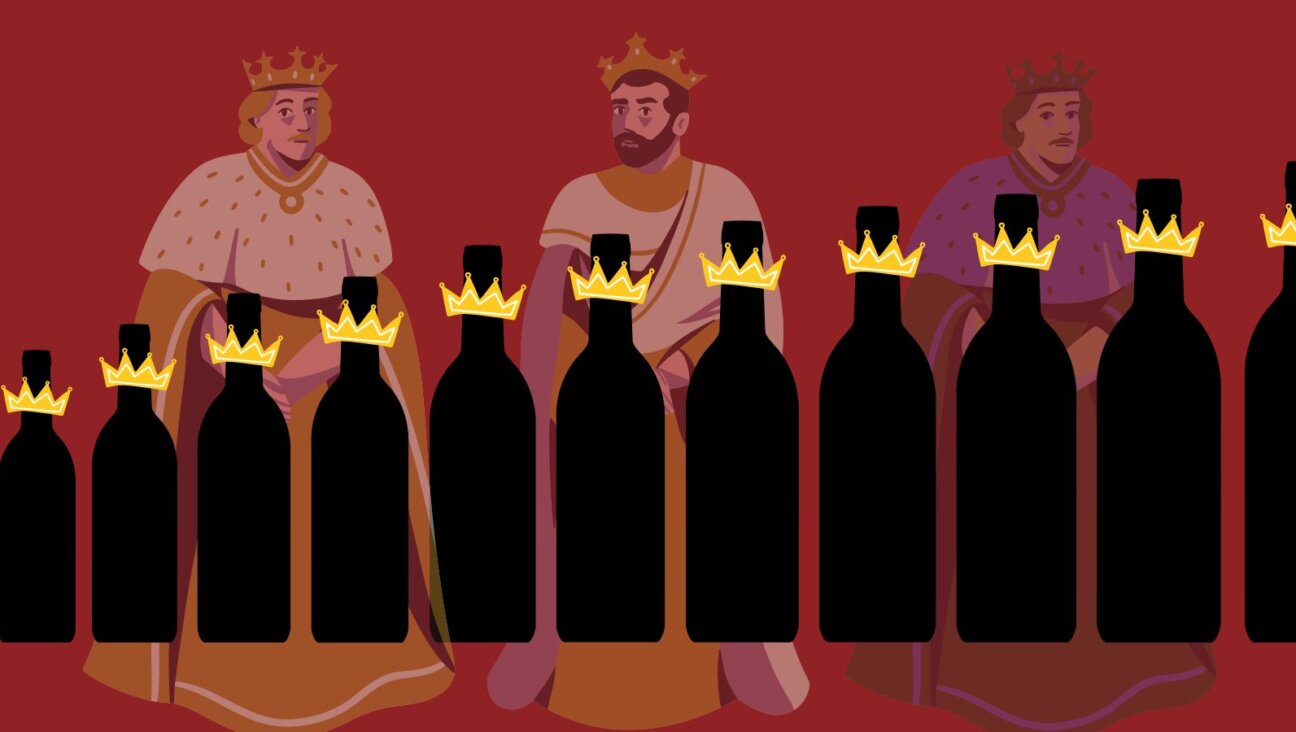How Strat-O-Matic Baseball Changed My Life Forever

Image by Kurt Hoffman
On a warm afternoon in the autumn of 1976, my friend Jonathan took me up to his family’s dusty attic playroom and introduced me to something that would change my life forever.
No, it wasn’t my first puff of weed, my first look at National Lampoon (or Hustler), or even my first listen to the Kiss album “Alive!” — I would have other friends to thank for those particular rites of passage. In fact, it wasn’t anything remotely subversive or rebellious at all, yet it blew my 10-year-old mind just the same: Jonathan showed me how to play Strat-O-Matic baseball.
I had fallen hard for the national pastime earlier that year, when the one-two punch of “The Bad News Bears” and Mark “The Bird” Fidrych convinced me not only that I wanted to play baseball, but also that I needed to learn everything I could about the game and its history. I read every baseball book I could get my hands on — my Brooklyn-born father was only too happy to lend me his copy of Roger Kahn’s “The Boys of Summer” — watched NBC’s Game of the Week and ABC’s Monday Night Baseball, listened to Ernie Harwell and Paul Carey call Detroit Tigers games on WJR radio, played pickup games in the park with my friends, and bounced endless tennis balls off my front steps while going through one opposing lineup after another in my mind. And still, it wasn’t enough to fully satisfy my raging baseball jones.
I’d first noticed the mail-order advertisements for Strat-O-Matic Baseball in the back of The Sporting News — or maybe it was Baseball Digest. “You have real control over all Major League players,” the ad copy promised, “who actually hit, pitch, field and run according to their baseball abilities.” This prospect fascinated me, especially since the few “table top” baseball games I’d played thus far in my life were either entirely based around the hitters (like Cadaco’s “All Star Baseball”), or simply produced random results with no realism whatsoever. So when Jonathan happened to mention on the playground one day that he actually had Strat-O-Matic, my ears promptly perked up — and I immediately began fishing for an invitation to come over and play it.
I’m not sure what I was expecting, but I recall being slightly underwhelmed when Jonathan pulled out the game. Housed in a red, rectangular box that featured a crude, semi-abstract rendering of a batter, catcher and umpire, the game board was basically a simple yellow baseball diamond on a green background with dugouts and an even cruder drawing of a pitcher.
The rest of the game consisted of individual player cards covered with stats; three dice (two red ones and a smaller white one); red plastic markers to represent the players on base; a stack of 20 “split cards,” and a couple of additional charts for calculating fielding, bunting and base-running results. In other words, not exactly the sort of thing that would coax an involuntary “Whoa, cool!” from the lips of a 1970s child previously enthralled by the likes of Pong and “kung-fu grip” G.I. Joe.

Image by Courtesy of Managing To Win
But once the dice got rolling, it became clear that what Strat-O-Matic lacked in flash, it more than made up for in terms of realism, not to mention fun. The afternoon quickly slipped away as we played several games between teams made up of pre-World War II Hall of Famers; not only did Hall of Famers like Ty Cobb, Babe Ruth and Walter Johnson perform more or less how I expected them to, but I also loved how the game left ample room for me to employ strategy, just like a “real” manager would.
We didn’t know the term “interactive” back then, but I really felt like I was interacting with these players, asking them to perform up to their highest capabilities, and trying to put them (and me) in the best position to win. Strat-O-Matic baseball was, hands down, the coolest game I’d ever played.
Several months later, I sent away for my own version, selecting several classic teams (including the 1927 New York Yankees, the 1953 Brooklyn Dodgers, the 1954 New York Giants, the 1957 Milwaukee Braves and the 1965 Los Angeles Dodgers) along with the 1976 World Series match-up of the Cincinnati Reds and the New York Yankees, because I was convinced that I could somehow manage the Bronx Bombers to a better outcome than the four-game sweep they’d suffered at the hands of the Big Red Machine.
I was soon spending countless hours in my room, rolling the Strat dice as I pitted the various teams against each other, experimenting with different lineups and observing how they fared against different pitchers. While I was never actually able to guide the ’76 Yankees to that elusive World Series ring — the ’76 Reds could have probably beaten the bubonic plague in seven games — Strat-O-Matic took me deeper into the game, introducing me to less-famous players and opening my brain to a deeper understanding of baseball statistics. Sure, it was astounding that Sandy Koufax threw 382 strikeouts in 1965, but I remember looking at his Strat-O-Matic card and being almost equally blown away by the realization that, in 335 2/3 innings that season, he’d given up only 216 hits and 71 walks. No wonder he did so well for me against even the toughest opposing teams!

Future Strat-O-Matic inventor Hal Richman at his Bar Mitzvah Image by Courtesy of Managing To Win
I wasn’t the only one who experienced such epiphanies while playing Strat-O-Matic baseball. In “Managing To Win,” a new documentary about Strat-O-Matic and Hal Richman, the man who invented it, broadcaster Bob Costas explains how the game instilled in him an appreciation of on-base percentage and slugging percentage — two important statistical categories that were all but ignored on the backs of baseball cards in the 1960s and ’70s. Former major leaguers Keith Hernandez and Doug Glanville speak passionately about the game’s uncanny ability to replicate baseball’s unique rhythms and dramatic situations, while a number of lesser-known Strat-O-Matic aficionados testify to the way Richman’s invention expanded their understanding and deepened their love of the sport. (Hernandez says he was so addicted to the game as a teen that his father actually had to hide his Strat-O-Matic from him before he left for his first Cardinals training camp.)
Richman, who for more than 50 years has been running the Strat-O-Matic Game Company — and who was inducted into the National Jewish Sports Hall of Fame in 2011 — came up with the initial version of what would become his life’s work when he was just 11 years of age. A nerdy, baseball-obsessed Jewish kid from Great Neck, New York, Richman experimented with countless iterations of the game, using his friends as “guinea pigs” to help him fine-tune its play, and constantly trying new methods of player analysis in order to produce the most realistic outcomes. As “Managing To Win” — which was released June 6 on DVD — explains, the game was far more than just a fun diversion for Richman; it was also a lifeline, a means for him to get out from under the thumb of his toxic, domineering father.
In 1961, three years after graduating from Bucknell University with a major in mathematics, Richman took the leap and launched the Strat-O-Matic Game Company, but he initially found few customers for his mail-order invention. Needing a cash infusion to further develop and market his game, Richman asked his dad for a $5,000 loan; Irving Richman, an angry and humorless man who saw his son’s dream of creating a successful tabletop baseball game as a frivolous affront to his own dignity and success, forked over the money on one condition: If Hal Richman wasn’t able to turn Strat-O-Matic baseball into a winner before the year was out, he would agree to forget about the game and come to work for his dad’s insurance firm. Thankfully, the company’s fortunes soon turned around; he was able to reimburse his father, and he never had to sell insurance. Over five decades later, Strat-O-Matic retains a remarkably loyal (and continually growing) fan base, even in an era dominated by baseball video and computer games.
Like the game it celebrates, “Managing To Win” is short on flash but long on substance. Much of the footage is amateurishly lit, the narration is often clunky, and one shot of dice being rolled across a Strat-O-Matic game board recurs so often that it’s hard not to laugh each time it appears. But there’s also something genuinely moving about its depiction of Richman’s relationship with his father, which mirrors the difficulties that so many children of European-born Jews faced while trying to find and forge their own identities in post-WWII America. Equally poignant are the scenes in which pairs of fathers and sons approach Richman at various Strat-O-Matic conventions and thank him for inventing the game that’s solidified their parent-child bond.
While many of the Strat-O-Matic fans interviewed in “Managing To Win” also speak enthusiastically of the way the game bonded them with their friends, I actually had the opposite experience. Jonathan moved away shortly after turning me on to Strat-O-Matic, and none of the friends I subsequently introduced to the game ever seemed to show much enthusiasm for it. Which, frankly, was okay with me; though I was a social kid by nature, I also really enjoyed playing the game by myself — it was easier to fully conjure up vivid images of the action in my head that way, and I could even practice a little Ernie Harwell-style play-by-play out loud if I felt like it.
Just as the invention of Strat-O-Matic baseball was a lifeline for Hal Richman, playing the game turned out to be a lifeline for me. Between the ages of 12 and 14, I wound up attending five different schools in three different cities, while living in three entirely different domestic formations — one of which unfortunately included a rage-aholic stepfather. In this time of confusion, upheaval and sometimes fear, Strat-O-Matic and the music coming out of my AM-FM clock radio were my only real anchors; whatever craziness was going down at school or in our living room, I could always retreat to my bedroom, turn up the music and see how many home runs Gorman Thomas and the rest of the 1978–79 Milwaukee Brewers (probably my all-time favorite Strat-O-Matic teams) would torch opposing pitchers for on this particular day.
In time, my obsession with music would completely pre-empt my obsession with baseball, and I eventually gave away all my Strat-O-Matic cards to a 10-year-old kid who lived down the street. But in 1998, when my love affair with the national pastime was rekindled by the Mark McGwire/Sammy Sosa home run chase, my passion for Strat-O-Matic came rushing back along with it. And it was while replaying the 1975 baseball season on the computer version of Strat-O-Matic (since sadly discontinued for Mac, though still available for Windows and as an online game) that I first hatched the idea for the book project that would become “Big Hair and Plastic Grass,” my history of baseball and America in the 1970s. I still play the card version of the game today — usually by myself, though sometimes with friends and colleagues who also grew up with it — and occasionally find myself pining for the full-season 1978 and 1979 team sets I gave away in the mid-1980s, which now regularly change hands on eBay for $100 or more.

Hal Richman Image by Courtesy of Managing To Win
The Hal Richman we see in “Managing To Win” is a modest man not given to affectation or self-aggrandizement. He still runs Strat-O-Matic out of a dumpy warehouse in Glen Head, New York, and still appears slightly embarrassed when people gush to him about how much his game has meant to them. But with all advance apologies to Richman for any additional embarrassment, you can definitely add me to the long list of baseball writers, players, executives and fans whose lives would have been very different (and much poorer) if it hadn’t been for the existence of Strat-O-Matic baseball. From one nerdy, baseball-obsessed Jewish kid to another: Thank you, Hal.
Dan Epstein is the author of “Stars and Strikes: Baseball and America in the Bicentennial Summer of ’76,” which is now out in paperback via St. Martin’s.

I hope you appreciated this article. Before you go, I’d like to ask you to please support the Forward’s award-winning journalism this Passover.
In this age of misinformation, our work is needed like never before. We report on the news that matters most to American Jews, driven by truth, not ideology.
At a time when newsrooms are closing or cutting back, the Forward has removed its paywall. That means for the first time in our 126-year history, Forward journalism is free to everyone, everywhere. With an ongoing war, rising antisemitism, and a flood of disinformation that may affect the upcoming election, we believe that free and open access to Jewish journalism is imperative.
Readers like you make it all possible. Right now, we’re in the middle of our Passover Pledge Drive and we need 500 people to step up and make a gift to sustain our trustworthy, independent journalism.
Make a gift of any size and become a Forward member today. You’ll support our mission to tell the American Jewish story fully and fairly.
— Rachel Fishman Feddersen, Publisher and CEO
Join our mission to tell the Jewish story fully and fairly.
Our Goal: 500 gifts during our Passover Pledge Drive!
























